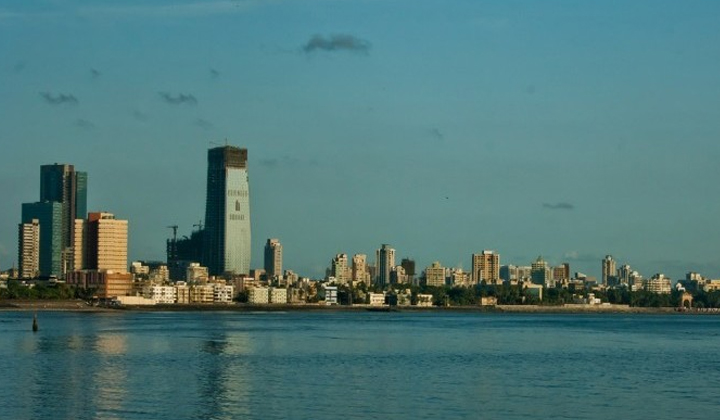Trending Now
- Action should be taken against the cops who protect the Ganja accused in TN : PMK leader Anbumani Ramdoss
- Votes that go to Congress or INDI alliance is a waste : PM Modi
- Court grants one-day custody to police to investigate Youtuber Savukku Shankar.
- We actually got our independence only in 2014. The independence to change this country as it should be : Actor , politician, Kangana Ranaut
Real Estate
Smart Cities get nominations, guidelines in 2015
![]() January 2, 2016
January 2, 2016
Preeti Sharma
In order to promote ‘bottom up’ planning in the country, Prime Minister Narendra Modi this year launched the Smart City Mission along with two other key initiatives – the Atal Mission for Rejuvenation and Urban Transformation (AMRUT) and Prime Minister’s Awas Yojana (PMAY). The new policy initiatives have set the tone of development in the country, making way for future cities, which may change the very face of real estate.
Looking back at 2015, M Venkaiah Naidu, Minister of Urban Development and Housing & Urban Poverty Alleviation, termed the initiatives as a ‘new beginning’ in the urban sector. “I am happy to see the urban local bodies rediscover themselves, identifying gaps and coming out with strategies for correction. The Smart City Mission has caught the imagination of the harassed urban population. A new beginning has been made. Now the task is to collectively succeed on the execution front to make urban areas more liveable and conducive to business and economic activity,” Naidu told PTI.
As it happened
These policies, one of the first to be launched in India, are seen as a beginning of urban transformation to make future cities efficient enough to fulfil the needs of the growing population.
In the month of January, the government set the tone for the Smart Cities Mission. “It will not be business as usual in the matter of financing of cities and towns under the new urban initiatives. Instead it will be based on the ability of the urban local bodies to reform urban governance and rise to the new challenges,” added Naidu.
The Government also asserted that states and urban local bodies will play a key role in the Smart City project to be rolled out in a phased manner on a PPP (Private Public Partnership) model this year.
In April, the Union Cabinet gave approval to the Centre to spend about one lakh crore on urban development under two new urban missions over the next five years. The Cabinet approved the Smart Cities Mission and the Atal Mission for Rejuvenation and Urban Transformation of 500 cities (AMRUT) with outlays of Rs 48,000 crore and Rs 50,000 crore, respectively.
Read guidelines for Smart Cities, AMRUT, urban housing Missions
Under the Smart Cities Mission, the Centre declared that each selected city would get assistance of Rs 100 crore per year for five years. For competition, the Smart City aspirants will be selected through a ‘City Challenge Competition’ intended to link financing with the ability of the cities to perform to achieve the mission’s objectives.
In June, the Prime Minster, while launching three mega urban schemes viz., Smart Cities Mission, Atal Mission for Rejuvenation and Urban Transformation (AMRUT) and Housing for All by 2022 in urban areas, said that the smart city aspirants are being selected through a process of competition.
The mission maintained that each state will shortlist a certain number of smart city aspirants as per the norms to be indicated and they will prepare the smart city proposals for further evaluation for extending Central support. Citizen consultation for planning and prioritisation of projects at city level was made mandatory under the new urban initiatives launched this year.
There began a healthy competition among the cities for selection under the Smart Cities Mission which was witnessed till the end of the year, as December 15 was the last date to submit the Smart City Proposals.
On August 28, Naidu unveiled a complete list of the 98 cities with Uttar Pradesh taking the largest share of developing 13 Smart Cties, followed by Tamil Nadu, which qualified to develop 12.
98 smart cities nominations
Guidelines
Here is a look at some of the guidelines decided by the Centre to develop 100 Smart Cities –
Each smart city will have a Special Purpose Vehicle (SPV) like that for Metro rail projects where managing directors will be solely in-charge.
A full time CEO will head for a fixed term of three years. The SPV will also have nominees from Centre and state governments besides representatives from the urban local bodies.
Under the Smart Cities initiative, focus will be kept on core infrastructure services, such as adequate and clean water supply, sanitation and solid waste management, efficient urban mobility and public transportation, affordable housing for the poor, power supply, robust it connectivity, governance, especially e-governance and citizen participation, safety and security of citizens, health and education and sustainable urban environment.
India also attracted investments from companies of the United States and Singapore to develop the Smart Cities.
On the last date of submission of proposal, December 15, smart city plans for 15 cities from 6 states and Puducherry have been submitted to the Ministry of Urban Development. These are Rajasthan (Jaipur, Udaipur, Ajmer and Kota), Punjab (Jalandhar), Jharkhand (Ranchi), West Bengal (New Town Kolkata, Bidhannagar and Durgapur), Kerala (Kochi), Karnataka (Davanagere, Tumakuru, Hubli-Dharwad and Shivmogga) and Puducherry (Oulgaret).
Outlook 2016
The next year and the coming years will witness the second state of ‘City Challenge Competition’ in motion. Under this, proposals will be evaluated based on Implementation Framework (30% weightage), Result orientation (20%), Citizen Participation (16%), Smartness of Pan City Solutions (10%), Strategy based on SWOT (Strengths, Weaknesses, Opportunities and Threats) analysis of the city (10%), City vision and goals (5%), Quality of city profiling including identification of Key Performance Indicators (5%) and Processes followed (4%).

























